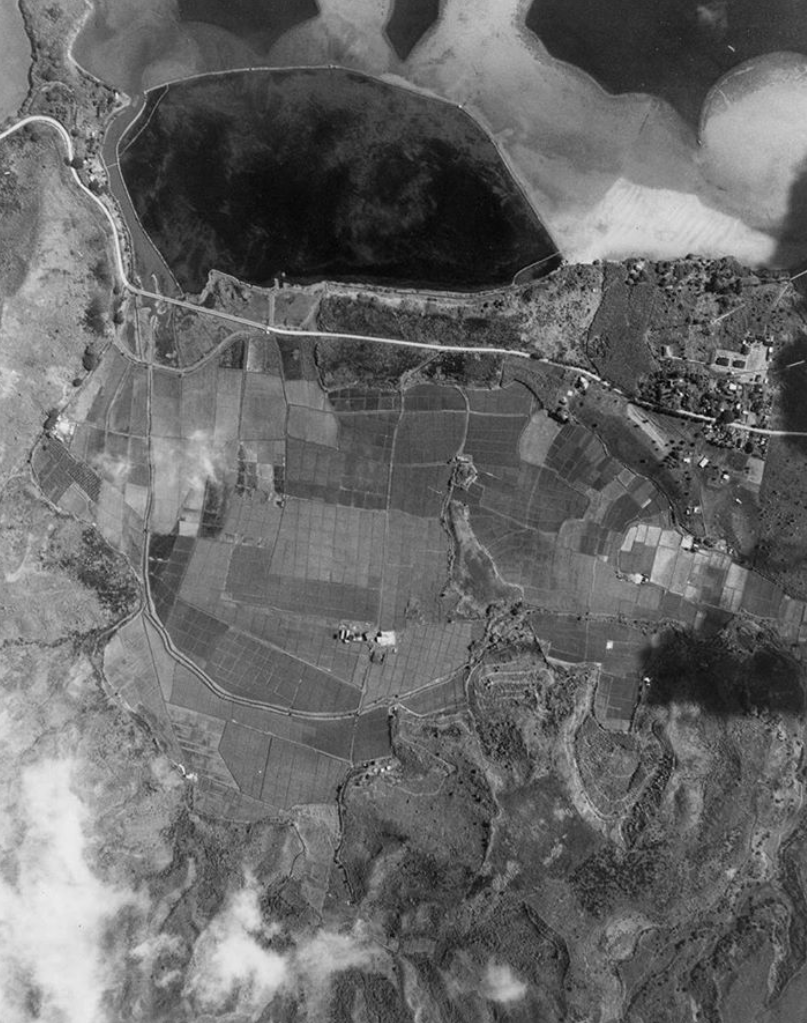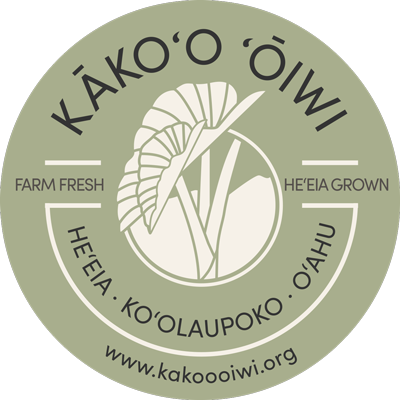History of Heʻeia
History of Heʻeia
In traditional times, Heʻeia, represented one of the most extensive areas of wetland taro cultivation on Oʻahu (Handy, Handy & Pukui, 1972). Through the mid-1930s, the Heʻeia wetlands were a thriving agricultural landscape, producing volumes of kalo, a nutrient-dense dietary staple for Hawaiians, and creating opportunities for social and economic advancement for the families of Heʻeia and Kāneʻohe.
As shown in a 1928 aerial image, the Heʻeia Wetlands once supported over 300-acres of wetland kalo and contained at least three commercial processing facilities (poi mills). The active, ongoing cultivation of kalo at Hoi also served a critical role in the hydrology of the Heʻeia Watershed, mitigating the effects of terrestrial runoff on adjacent estuarine and inshore coral reef ecosystems of Kāneʻohe Bay.

An aerial photo of the 400 acre parcel. Mid 1928ʻs

Approximately 3 acre of farmland utilizing cultural and sustainable practices
In the decades since the 1930’s, developers sought to build luxury homes, a marina, a resort and golf course at the Heʻeia Wetlands, actions that were met with strong opposition from local area kūpuna and other community members. In July of 1991, approximately 405 acres within the Heʻeia Wetlands were acquired by the Hawaiʻi Community Development Authority (HCDA). In 2010, Kākoʻo ʻŌiwi was granted a 38-year lease from the HCDA for the 405-acre parcel to implement activities related to and supportive of cultural practices, agriculture, education, and natural-resource restoration and management.

Shop from our sustainably farmed fresh produce
“Mahalo piha e Kākoʻo ʻŌiwi, for your graciousness for your healing and your aloha, I am so honored and blessed to have been able to come back with my ohana and experience the aina and connections Oiwi does.”
Our work is not done and with your continued support we look to continue to restore land through these programs.
On behalf of Kākoʻo ‘Ōiwi; mahalo for you support.
